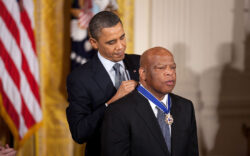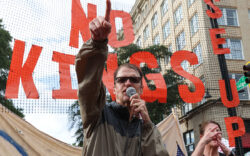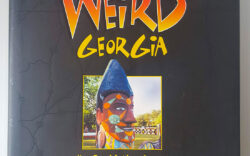“Tin soldiers and Nixon coming/ We’re finally on our own/ This summer I hear the drumming/ Four dead in Ohio.” Those song lyrics from Crosby, Stills, Nash and Young commemorated the Ohio National Guard’s killing of four college students and wounding of nine others at Kent State University during antiwar protests on May 4, 1970. Next month marks the 50th anniversary of the infamous Kent State killings, and the song that memorializes the dead is still haunting to Americans who remember the day when the carnage in Vietnam was brought to a college campus in the American Midwest. “How many more?” asked the singers at the song’s end. Their question was answered just 11 days later, at predominately black Jackson State College in Mississippi, where police killed two students and wounded 12 during protests over racial injustice in Mississippi and the war in Vietnam.
The campus killings at Kent and Jackson angered civil rights and antiwar activists half a century ago, but the two incidents in 1970 were not the first time government gunmen had killed protesting college students in the United States. On Feb. 8, 1968, at South Carolina State University in Orangeburg, SC, police shot and killed three young African-American men and wounded more than than two dozen people during protests against racial segregation at a white-owned bowling alley near the campus. The incident at the historically black college predates the more well-known campus shootings in Ohio and Mississippi by more than two years. It became known as the Orangeburg Massacre. On Nov. 16, 1972, blood flowed again at a mostly black school when two students were shot dead by police during protests against poor services and funding at Southern University in Baton Rouge, LA.
Massacres are nothing new in America, but history classes in U.S. schools and colleges often emphasize only the Boston Massacre of 1770, when British soldiers gunned down five protesting colonists in an event that precipitated the American Revolution. Writing in The Progressive magazine in August 1998, historian Howard Zinn reminded his readers that there have been many other massacres throughout the history of this nation, whose original sins included genocide against the country’s indigenous people and the slavery of blacks abducted from Africa. “The massacres of Indians by the armies of the United States—in Colorado in 1864, in Montana in 1870, in South Dakota in 1890, to cite just a few—were massacres in the most literal sense: that is, wholesale slaughter in each case of hundreds of unarmed men, woman and children,” Zinn wrote.
In the article, Zinn also reminded readers of the Ludlow Massacre of 1914, when Colorado National Guardsmen fired on striking miners at a mine owned by John D. Rockefeller Jr. The guardsmen also burned tents occupied by the strikers, angering Americans when it was revealed that 11 children and two women had died in the blaze. Three years later, in East St. Louis, IL, police and white mobs attacked a black section of the city in a frenzy of anger over the migration of job-seeking African Americans to the area. “Job desperation was a common cause of mob violence,” wrote Zinn. “In 1921, in Tulsa, OK, planes dropped nitroglycerin on a 36-block black business district, destroying hundreds of businesses, more than 1,000 homes, 20 churches, a hospital, libraries and schools.”
Even earlier in the 20th century, Atlanta was rocked by race riots that terrorized the city for four bloody days in 1906. The official death toll from Atlanta’s riot of 1906 was 12—ten blacks and two whites—but, in his compelling book, Negrophobia: A Race Riot in Atlanta, 1906, author Mark Bauerlein estimated that about 50 blacks may have been killed by white mobs during the days of violence in Atlanta. Nearly 60 years later, Atlanta called itself “the city too busy to hate.”
Zinn died in 2010, but in such seminal works as A People’s History of the United States, he reminded us that our history is littered with the corpses of those who died struggling for freedom in America. As he wrote, “There is no flag large enough to cover the shame of killing innocent people.”
Like what you just read? Support Flagpole by making a donation today. Every dollar you give helps fund our ongoing mission to provide Athens with quality, independent journalism.










